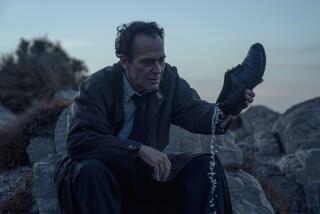The Street Where She Lived
- Share via
The street where Linda Enriquez lived is tree-shaded and quiet, the perfect embodiment of a neighborhood in the suburbs. Its homes are well-kept, its gardens tended. On a morning in summer, the smell of a freshly mowed lawn lingers in the air and the shouts of children drift down the block.
Although she had only lived there a few months, Enriquez knew many of her neighbors on the pleasant Alhambra thoroughfare and greeted them as though they had been friends for years. It was the way she was.
Her small house reflected the orderly neatness of the street itself and of her own caring attitude. Nothing was out of place, no dust gathered. Sometimes when her work was done, she would sit on a couch and look out a corner window at the neighborhood, savoring its serenity, glad she was there.
And then one Friday evening, doubled over with pain, Enriquez took to her bed. Vomiting and miserable, she remained that way all weekend, tended by her three grown children.
At first they thought it was the flu and then food poisoning. They urged her to seek medical help, but she refused. Doctors cost money. She thought it would go away. She’d wait it out.
It didn’t go away. On the following Monday afternoon, her eldest daughter Letty returned from work, gave her mother some water and left the room. When she returned, Linda Enriquez was dead. She was 55.
The cause of her death was a strangulated hernia. She could have been saved.
*
I learned about Enriquez from her friends and co-workers at the L.A. County Superior Court, where she was employed as a part-time receptionist and messenger.
They knew that she didn’t have to die and were saddened by both her death and by a system that denied her medical insurance despite the longevity of her employment.
Enriquez began working with the courts in 1983. Divorced, she was raising three children mostly on her own. At her death, she was earning $6.47 an hour. Because she was part-time, she had no medical benefits.
Pennies mattered to Enriquez during those hard years and doctors were something you did without if you could. For her three children, she would sacrifice anything, but for herself, it was the nature of Enriquez to suffer in silence.
Twice she probably had mild strokes. Her co-workers and children noticed her dizziness and the “crookedness” of her face on both occasions. Enriquez treated herself with bed rest and by massaging her face.
The difficulty of her situation especially bothered court clerk Grace Rodriguez. She found Enriquez to be a caring and a loving person and it pained her to see her gentle, soft-spoken friend suffer.
Others also felt that way. Enriquez had been hired first as a student worker and after four years should have either been terminated or hired on a full-time basis. Had she become permanent, she would have qualified for medical insurance.
But somehow, as one executive put it, she “fell through a crack in the system” and was allowed to remain on a part-time basis. Linda Enriquez, a small cog in the vast machinery, had simply escaped notice.
*
Ironically, it was the beauty of her conduct that later allowed her to continue in that status. Her boss John Johnston said that two years ago she tested to become permanent but failed.
“We didn’t fire her,” he said, “because she was a wonderful person, a friend and a good worker. Someone should have looked at her status long before then but didn’t. Under a new system, this couldn’t happen again.”
Systems aren’t made for individuals but for the orderly function of an organization. Linda’s is a special case because of the kind of person she was. Her co-workers and her children loved her . . . but only her death individualizes her.
No one knows for sure why she didn’t seek medical help at a county hospital, but Rodriguez suspects it was her pride that kept her away. She had always been self-sufficient. She would not ask for charity now.
The specific cause of her death was an “incarcerated umbilical hernia.” It occurs when a portion of the intestine protrudes through the abdominal wall. With quick treatment, Enriquez would be alive today.
Instead, the small house in Alhambra on a street sweetened by the aroma of newly mowed grass is occupied by her three children. They had been saving money to buy the house for their mother. They used what they had saved to bury her.
Her co-workers believe the system killed Linda Enriquez. That may be so. But in the framework of the institutions we create, a truth emerges. The system in the long run is us.
(Al Martinez can be reached through Internet at al.martineZ@latimes.com)
More to Read
Sign up for Essential California
The most important California stories and recommendations in your inbox every morning.
You may occasionally receive promotional content from the Los Angeles Times.












